Improving Your Precision Cutting Skills for Quilting
Welcome to the world of quilting, where every cut counts! If you're looking to elevate your quilting game, mastering precision cutting is your golden ticket. Imagine the satisfaction of seeing your quilt pieces fit together like a perfectly crafted puzzle. That sense of achievement comes from honing your cutting skills, and in this article, we’re going to explore essential techniques and tips that will help you enhance your precision cutting abilities. So, grab your rotary cutter and let’s dive into the art of cutting with accuracy!
Why is precision cutting so important in quilting? Well, think of it this way: when you bake a cake, the right measurements can make or break your dessert. The same principle applies to quilting! Accurate cuts lead to better fitting pieces, which ultimately results in a polished final product. When every piece is cut just right, your quilt not only looks professional but also feels more cohesive. You’ll notice that the seams align perfectly, and your overall quilting experience becomes much more enjoyable. So, let’s not overlook the foundation of our projects—precision cutting is the bedrock of beautiful quilts!
To achieve precision in cutting, selecting the right tools is absolutely vital. Think of your cutting tools as the paintbrushes of a painter; without the right ones, the masterpiece may not come to life as envisioned. Here are some essential tools you’ll want to have in your quilting arsenal:
- Rotary Cutters: These are indispensable for making clean, straight cuts.
- Cutting Mats: Protect your surfaces and provide a grid for accurate measurements.
- Quilting Rulers: Essential for measuring and cutting fabric accurately.
Equipped with these tools, you can significantly improve your cutting accuracy and, in turn, the quality of your quilting projects.
A rotary cutter is a fundamental tool for quilters. When choosing one, consider the different sizes and types available. A 45mm rotary cutter is the most common and versatile choice, perfect for cutting through multiple layers of fabric. However, if you’re working with delicate fabrics, a smaller 28mm cutter might be a better fit. Understanding your specific cutting needs will help you select the best option and make your cutting experience smoother.
Just like a chef sharpens their knives, proper maintenance of your rotary cutter ensures longevity and consistent performance. Regularly changing blades is crucial—dull blades can lead to jagged cuts and frustration. Additionally, keeping your cutter clean prevents fabric buildup, allowing for smoother cuts. A well-maintained rotary cutter not only enhances your cutting precision but also boosts your overall efficiency, making every quilting session a joy!
Your cutting mat is more than just a surface; it’s your cutting canvas! A good cutting mat protects your surfaces and provides a grid for accurate measurements. When using it, make sure to align your fabric with the grid lines to ensure straight cuts. Also, consider the thickness of your mat; a thicker mat can absorb the pressure of your cuts better, extending its lifespan. Learning how to use your cutting mat effectively can significantly improve your cutting skills and prevent damage to your tools.
Quilting rulers are essential for achieving precise cuts. They come in various shapes and sizes, allowing you to measure and cut fabric accurately. When using a ruler, always ensure it’s securely placed on the fabric before cutting; this prevents any slipping that could lead to inaccuracies. By mastering the use of different types of rulers, you’ll ensure your pieces fit together seamlessly, creating that beautiful quilt you envision!
Now that we’ve covered the tools, let’s talk about the techniques that can greatly enhance your cutting accuracy. Implementing specific methods can make all the difference in your quilting projects. For instance, stack cutting allows you to cut multiple layers of fabric simultaneously, saving time while maintaining precision. This technique is particularly useful for larger projects where efficiency is key.
Stack cutting is a game-changer! By layering your fabric and cutting through multiple pieces at once, you can streamline your cutting process. Just remember to keep your layers aligned and use a sharp rotary cutter to ensure clean cuts. This method not only saves time but also enhances the uniformity of your pieces, making assembly a breeze.
Understanding and aligning fabric grainlines is essential for achieving precise cuts. The grainline refers to the direction of the threads in the fabric, and cutting along the grainline helps prevent distortion. Before you cut, take a moment to identify the grainlines and ensure they are correctly positioned. This attention to detail will pay off in the accuracy of your finished quilt.
Even seasoned quilters can fall into traps that compromise cutting accuracy. Identifying and avoiding common mistakes is crucial for enhancing your quilting experience. Here are a couple of frequent errors to watch out for:
Proper fabric preparation is crucial for accurate cutting. Pre-washing your fabric helps minimize stretching and distortion, ensuring that your cuts are true to size. Additionally, pressing your fabric before cutting can eliminate any wrinkles that might throw off your measurements. Taking these steps will lead to more precise cuts and a smoother quilting process.
Taking inaccurate measurements can lead to cutting errors that ripple through your entire project. Always double-check your measurements before making any cuts. A simple mistake can result in wasted fabric and frustration. Remember, in quilting, patience and precision go hand in hand!
Q: What is the best rotary cutter for beginners?
A: A 45mm rotary cutter is generally the best choice for beginners due to its versatility and ease of use.
Q: How often should I change my rotary cutter blade?
A: It’s recommended to change your rotary cutter blade every 5-10 hours of cutting, or whenever you notice it becoming dull.
Q: Can I cut multiple layers of fabric at once?
A: Yes, stack cutting allows you to cut multiple layers simultaneously, which can save time and ensure uniformity.
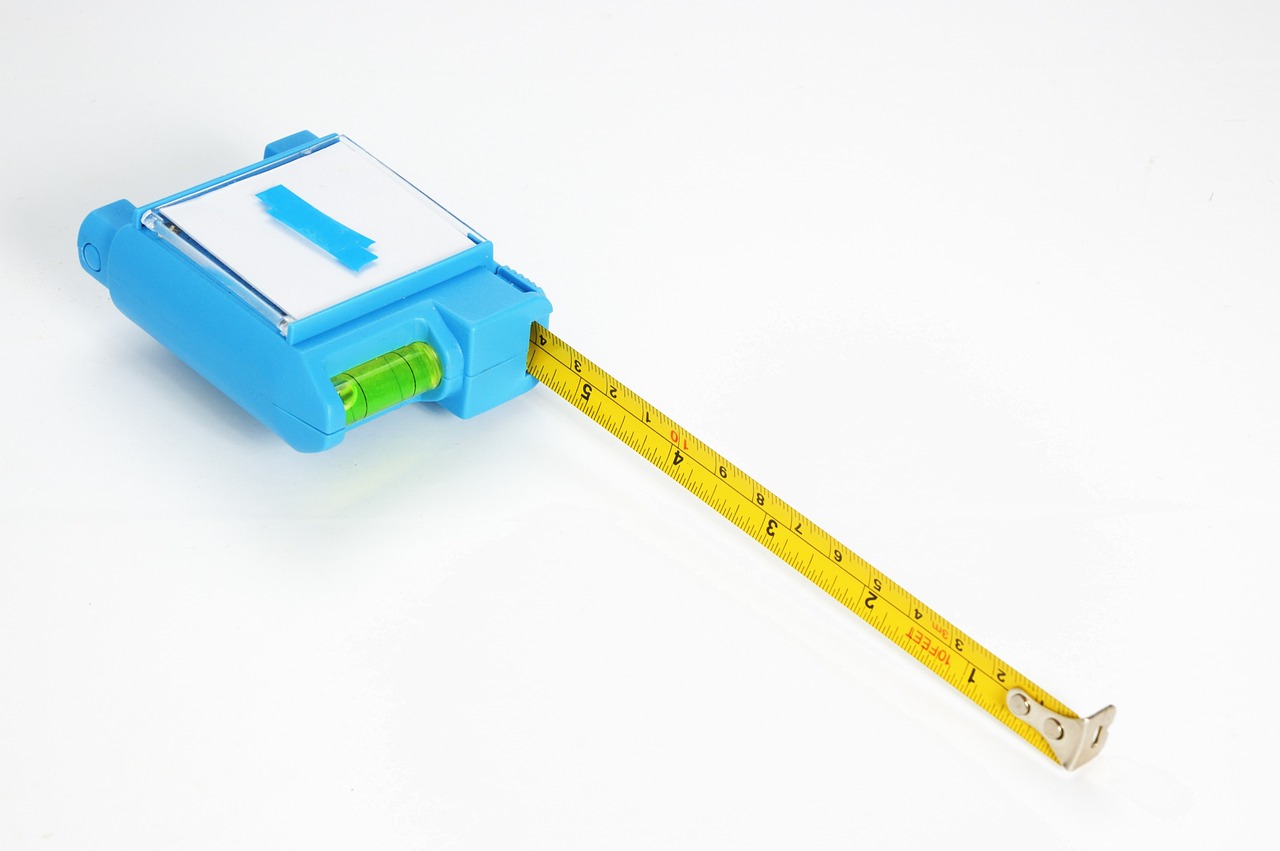
Understanding the Importance of Precision Cutting
When it comes to quilting, precision cutting is not just a technical skill; it’s an art form that can make or break your project. Imagine trying to assemble a jigsaw puzzle with pieces that don’t quite fit together. Frustrating, right? That’s exactly what happens when your fabric pieces are inaccurately cut. They may not align properly, leading to uneven seams and an overall lack of cohesion in your quilt. This is why mastering the art of precision cutting is essential for any quilter looking to elevate their craft.
Precision cutting ensures that each piece of fabric fits together seamlessly, allowing for a polished and professional finish. Think of it as the foundation of your quilting project; just like a house needs a solid base to stand on, your quilt requires accurately cut pieces to hold its shape and beauty. When you invest the time and effort into making precise cuts, you not only enhance the quality of your work but also improve your overall quilting experience. You’ll find yourself spending less time fixing mistakes and more time enjoying the creative process.
Moreover, precision cutting allows you to explore more complex patterns and designs. When you know that your cuts are accurate, you gain the confidence to tackle intricate projects that may have seemed daunting before. This opens up a world of possibilities, enabling you to express your creativity without the worry of misalignment. In the long run, the benefits of precision cutting extend beyond just the aesthetics of your quilt; it can also lead to a more efficient workflow, saving you time and frustration.
So, how do you achieve this level of precision? It starts with understanding your tools and techniques, which we’ll explore in the following sections. But remember, the journey to mastering precision cutting is not just about the end result; it’s about enjoying the process and embracing the learning curve that comes with it. After all, every expert was once a beginner!
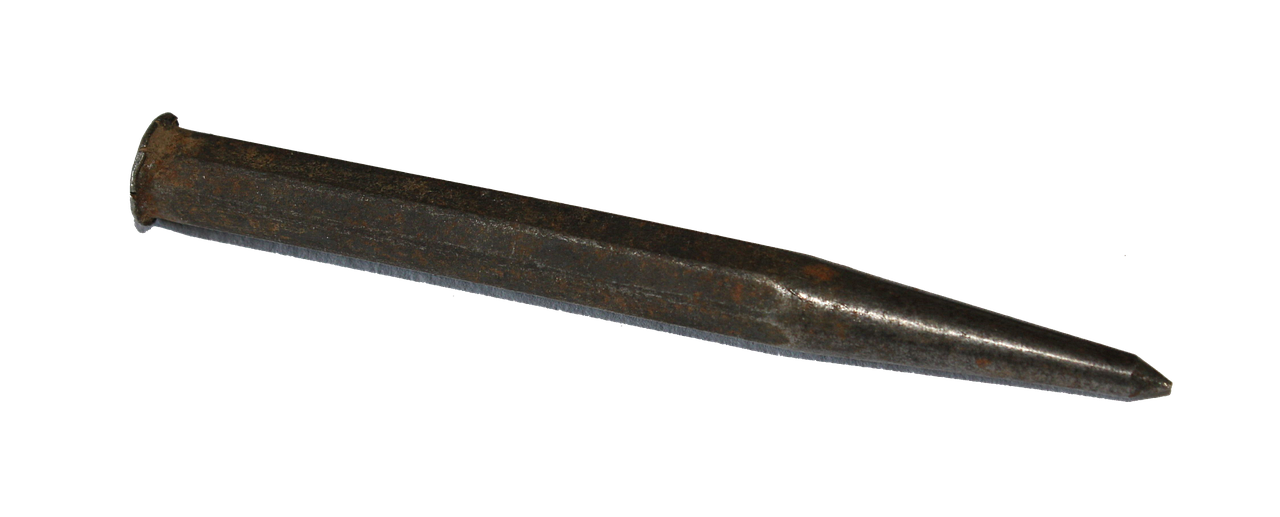
Essential Tools for Precision Cutting
This article explores essential techniques and tips for enhancing your precision cutting skills in quilting, ensuring better accuracy and quality in your projects.
Precision cutting is crucial in quilting as it affects the overall outcome of your projects. Accurate cuts lead to better fitting pieces and a polished final product, enhancing your quilting experience.
When it comes to quilting, having the right tools can make all the difference. Imagine trying to bake a cake without a proper set of measuring cups or a sharp knife—your results would likely be less than stellar! The same principle applies to quilting. To achieve top-notch precision in your cutting, you need to invest in a few essential tools that will not only improve your accuracy but also make your quilting journey more enjoyable.
First and foremost, a rotary cutter is a must-have in your quilting toolkit. Unlike traditional scissors, rotary cutters allow for smooth, clean cuts through multiple layers of fabric. These cutters come in various sizes, typically ranging from 28mm to 60mm, catering to different cutting needs. For instance, a smaller cutter is ideal for intricate designs, while a larger one is perfect for cutting larger pieces.
Next, a cutting mat is essential for protecting your work surface and prolonging the life of your rotary cutter. A good cutting mat features a grid pattern that helps you measure and align your fabric accurately. It’s like having a built-in ruler that doesn’t move! When using a cutting mat, be sure to choose one that is self-healing, which means it can recover from cuts and stay smooth over time.
Additionally, quilting rulers are invaluable for achieving precise cuts. These rulers come in various shapes and sizes, allowing you to measure and cut fabric accurately. When using a ruler, make sure it’s clear and has a non-slip backing to prevent it from moving while you cut. The right ruler can be the difference between a perfectly aligned quilt block and a frustratingly misaligned one.
Here's a quick comparison of the essential tools:
| Tool | Purpose | Features |
|---|---|---|
| Rotary Cutter | Cut fabric smoothly | Variety of sizes, ergonomic handles |
| Cutting Mat | Protect surfaces | Self-healing, grid patterns |
| Quilting Ruler | Measure and cut accurately | Non-slip backing, various shapes |
Finally, don’t overlook the importance of a fabric scissors in your toolkit. While rotary cutters are fantastic for straight lines, scissors are perfect for intricate cuts and small details. A good pair of fabric scissors can cut through layers with ease and provide the precision needed for those delicate edges.
Employing specific techniques can greatly enhance your cutting accuracy. This section outlines various methods, such as stacking fabric layers and aligning grainlines, to improve your cutting skills.
Stack cutting allows you to cut multiple layers of fabric simultaneously, saving time while maintaining precision. This technique is especially useful for larger projects and can streamline your cutting process.
Understanding and aligning fabric grainlines is essential for achieving precise cuts. This section discusses how to identify grainlines and ensure they are correctly positioned before cutting.
Identifying and avoiding common mistakes in cutting can enhance your quilting experience. This section highlights frequent errors and offers tips to ensure more accurate and successful cutting results.
Proper fabric preparation is crucial for accurate cutting. This section explains the importance of pre-washing and pressing fabric to minimize stretching and distortion before cutting.
Taking inaccurate measurements can lead to cutting errors. This part discusses the importance of careful measuring and double-checking before making any cuts to ensure precision in your quilting projects.
- What is the best rotary cutter for beginners? A 45mm rotary cutter is often recommended due to its versatility and ease of use.
- Do I really need a cutting mat? Yes! A cutting mat protects your surfaces and prolongs the life of your cutting tools.
- How can I improve my cutting accuracy? Always double-check your measurements and ensure your fabric is properly aligned before cutting.

Choosing the Right Rotary Cutter
When it comes to quilting, the right tools can make all the difference, and your rotary cutter is no exception. Choosing the perfect rotary cutter is like selecting the right brush for a painter; it can enhance your creativity and precision. With various sizes, styles, and features available, it’s essential to know what to look for to ensure that your cutting experience is smooth and effective.
First and foremost, consider the size of the rotary cutter. Rotary cutters typically come in different diameters, with the most common sizes being 28mm, 45mm, and 60mm. The 45mm cutter is often recommended for most quilting projects as it strikes a balance between versatility and ease of use. However, if you’re working with delicate fabrics or smaller pieces, a 28mm cutter may be more suitable. On the other hand, for larger projects or multiple layers of fabric, a 60mm cutter can make quick work of your cutting tasks.
Next, think about the handle design. Rotary cutters come with various handle styles, including straight, ergonomic, and even those with safety features. An ergonomic handle can significantly reduce hand fatigue, especially during long cutting sessions. If you have larger hands or prefer a more comfortable grip, look for a cutter with a handle that fits your hand well. Additionally, some cutters feature a safety lock that keeps the blade covered when not in use, which is a fantastic safety feature, especially if you have children around.
Another aspect to consider is the blade material. Most rotary cutters use steel blades, but some are made from high-quality Japanese steel, which can offer superior sharpness and durability. A sharp blade is crucial for achieving clean cuts, so ensure that you select a rotary cutter with easily replaceable blades. It’s a good practice to regularly check the sharpness of your blade and replace it as needed to maintain precision.
Lastly, think about any additional features that may enhance your cutting experience. Some rotary cutters come with built-in blade covers or retractable blades for added safety. Others might have a locking mechanism that secures the blade in place while cutting. These features can provide extra convenience and peace of mind while you work on your quilting projects.
In summary, choosing the right rotary cutter involves considering the size, handle design, blade material, and additional features. By selecting a rotary cutter that meets your specific needs, you can enhance your precision cutting skills and enjoy a smoother quilting experience. Remember, the right tool not only improves your accuracy but also boosts your confidence as you create beautiful quilts.
Frequently Asked Questions
- What size rotary cutter should I choose for quilting? The 45mm rotary cutter is the most commonly recommended size for quilting, but 28mm and 60mm options are available depending on your specific needs.
- How often should I replace the blade in my rotary cutter? It’s best to replace your blade when you notice it becoming dull, which can vary depending on how often you use it and the types of fabric you are cutting.
- Are ergonomic rotary cutters worth the investment? Yes, ergonomic rotary cutters can help reduce hand fatigue and make cutting more comfortable, especially during long quilting sessions.

Maintaining Your Rotary Cutter
Maintaining your rotary cutter is not just a chore; it’s an essential part of ensuring your quilting projects turn out beautifully every time. Think of your rotary cutter as your trusty sidekick in the world of quilting; if it’s not in top shape, your cutting precision can suffer dramatically. One of the primary aspects of maintaining your cutter is regularly changing the blades. Dull blades can cause fabric to fray and distort, leading to inaccuracies in your cuts. It's recommended to replace the blade after every 5 to 10 projects, depending on the thickness of the fabric you’re working with. A sharp blade cuts through fabric like a hot knife through butter, ensuring clean edges and minimizing the risk of injuries.
Another critical maintenance step is keeping your rotary cutter clean. Fabrics can leave behind dust and lint that accumulate in the cutting mechanism, affecting performance. To clean your cutter, simply wipe it down with a soft cloth and a bit of rubbing alcohol. This simple act not only extends the life of your cutter but also ensures that it operates smoothly. Additionally, check the alignment of the blade regularly. If the blade is misaligned, it can lead to uneven cuts, making your quilting experience frustrating.
Lastly, consider investing in a protective case or cover for your rotary cutter when it’s not in use. This will prevent accidental damage and keep the blade safe from dulling. A little extra care goes a long way in maintaining your rotary cutter, ultimately enhancing your precision cutting skills and making your quilting projects more enjoyable.
Here are some common questions about rotary cutter maintenance:
- How often should I change my rotary cutter blade? It’s advisable to change the blade after every 5 to 10 projects, depending on the fabric thickness.
- Can I sharpen my rotary cutter blade? While some quilters use blade sharpeners, it's often more effective and safer to replace the blade.
- What should I use to clean my rotary cutter? A soft cloth and rubbing alcohol are ideal for keeping your cutter clean.
- Is it safe to store my rotary cutter in a drawer? It’s best to use a protective case or cover to prevent accidental injuries and protect the blade.

Using a Cutting Mat Effectively
Utilizing a cutting mat effectively is a game changer for any quilter looking to enhance their precision cutting skills. A cutting mat serves not just as a protective surface for your table, but it also provides a grid that helps you measure and align your fabric accurately. Imagine trying to navigate a road without signs or markers; it would be chaotic, right? That’s exactly what cutting without a mat feels like. By using a cutting mat, you create a structured environment that significantly boosts your cutting accuracy.
When choosing a cutting mat, consider its size and thickness. A larger mat gives you more space to work with, especially when handling big pieces of fabric. Additionally, the thickness of the mat is important; a thicker mat can withstand the pressure of rotary cutters without warping, ensuring that it remains flat and reliable over time. Most cutting mats come with a grid that includes both inch and metric measurements, making it easier for you to choose the system you’re most comfortable with.
To maximize the effectiveness of your cutting mat, always keep it clean. Dust and fabric lint can accumulate on the surface, affecting your cutting precision. Regularly wipe down your mat with a damp cloth to keep it in top condition. If you notice any cuts or grooves on the mat, consider rotating it to use a different side, as many mats are double-sided. This not only prolongs the life of the mat but also provides you with a fresh cutting surface when needed.
Another crucial tip is to use the grid markings effectively. Align the edges of your fabric with the grid lines to ensure straight cuts. If you’re cutting strips, it’s helpful to cut multiple layers of fabric at once, provided they are aligned correctly. This technique is known as stack cutting and can save you a significant amount of time, especially for larger projects. Just remember to check that the fabric layers are smooth and free from wrinkles before making your cuts.
Lastly, always position your cutting mat on a stable surface. A wobbly table can lead to inaccurate cuts and a frustrating experience. If your workspace is not ideal, consider investing in a sturdy cutting table or a dedicated quilting station. This small change can make a world of difference in your cutting accuracy and overall quilting experience.
- What size cutting mat should I choose? The size of the cutting mat depends on your workspace and the size of the fabric you typically work with. A larger mat provides more room for cutting but ensure it fits your sewing area.
- How do I clean my cutting mat? Use a damp cloth to wipe down your mat regularly. For deeper cleaning, you can use a mild soap solution, but ensure it dries completely before using it again.
- Can I cut on both sides of my cutting mat? Yes, most cutting mats are double-sided, allowing you to flip them over for a fresh cutting surface.
- Is it necessary to have a cutting mat? While it's not strictly necessary, a cutting mat significantly enhances your cutting accuracy and protects your work surface, making it a valuable tool for quilters.

Utilizing Quilting Rulers
This article explores essential techniques and tips for enhancing your precision cutting skills in quilting, ensuring better accuracy and quality in your projects.
Precision cutting is crucial in quilting as it affects the overall outcome of your projects. Accurate cuts lead to better fitting pieces and a polished final product, enhancing your quilting experience.
Selecting the right tools is vital for achieving precision in cutting. This section discusses various tools such as rotary cutters, cutting mats, and rulers that can significantly improve your cutting accuracy.
A rotary cutter is a fundamental tool for quilters. Understanding the different sizes and types available can help you select the best option for your specific cutting needs and techniques.
Proper maintenance of your rotary cutter ensures longevity and consistent performance. Regularly changing blades and keeping the cutter clean can enhance your cutting precision and overall efficiency.
A cutting mat protects your surfaces and provides a grid for accurate measurements. Learning how to use it effectively can significantly improve your cutting skills and prevent damage to your tools.
Quilting rulers are essential for achieving precise cuts. These transparent tools often come with grid lines and measurements that help you visualize and execute your cutting plans with accuracy. When using a quilting ruler, it's important to position it correctly on your fabric. Make sure to align the edges of the ruler with the cutting lines you’ve marked on your fabric. This simple act can drastically improve the precision of your cuts.
One of the most effective ways to utilize quilting rulers is to choose the right type for your project. For instance, a long ruler is perfect for cutting long strips, while a square ruler is ideal for squaring up blocks. By having a variety of rulers at your disposal, you can tackle any cutting task with confidence. Here’s a quick breakdown of some common types of quilting rulers:
| Type of Ruler | Best For |
|---|---|
| Long Ruler | Cutting long strips and borders |
| Square Ruler | Squaring up blocks and cutting squares |
| Triangle Ruler | Cutting triangles and angles |
Additionally, always remember to apply consistent pressure while cutting. This helps maintain the ruler's position and prevents any slipping, which can lead to uneven cuts. If you find yourself struggling to keep the ruler steady, consider using ruler grips. These little accessories can hold your ruler in place and give you the confidence to make that cut without fear of error.
In summary, utilizing quilting rulers effectively can transform your cutting accuracy. By selecting the right ruler for your project, aligning it properly, and maintaining a steady hand, you’ll find that your quilting projects come together with greater ease and precision.
Employing specific techniques can greatly enhance your cutting accuracy. This section outlines various methods, such as stacking fabric layers and aligning grainlines, to improve your cutting skills.
Stack cutting allows you to cut multiple layers of fabric simultaneously, saving time while maintaining precision. This technique is especially useful for larger projects and can streamline your cutting process.
Understanding and aligning fabric grainlines is essential for achieving precise cuts. This section discusses how to identify grainlines and ensure they are correctly positioned before cutting.
Identifying and avoiding common mistakes in cutting can enhance your quilting experience. This section highlights frequent errors and offers tips to ensure more accurate and successful cutting results.
Proper fabric preparation is crucial for accurate cutting. This section explains the importance of pre-washing and pressing fabric to minimize stretching and distortion before cutting.
Taking inaccurate measurements can lead to cutting errors. This part discusses the importance of careful measuring and double-checking before making any cuts to ensure precision in your quilting projects.
Q: How can I improve my cutting accuracy?
A: Practice makes perfect! Use quilting rulers, maintain your tools, and always double-check your measurements.
Q: What is the best way to store my cutting tools?
A: Keep your rotary cutter in a safe place, store rulers flat to avoid warping, and ensure your cutting mat is clean and dry.
Q: Can I use regular scissors instead of a rotary cutter?
A: While you can use scissors, a rotary cutter offers more precision and efficiency for quilting projects.
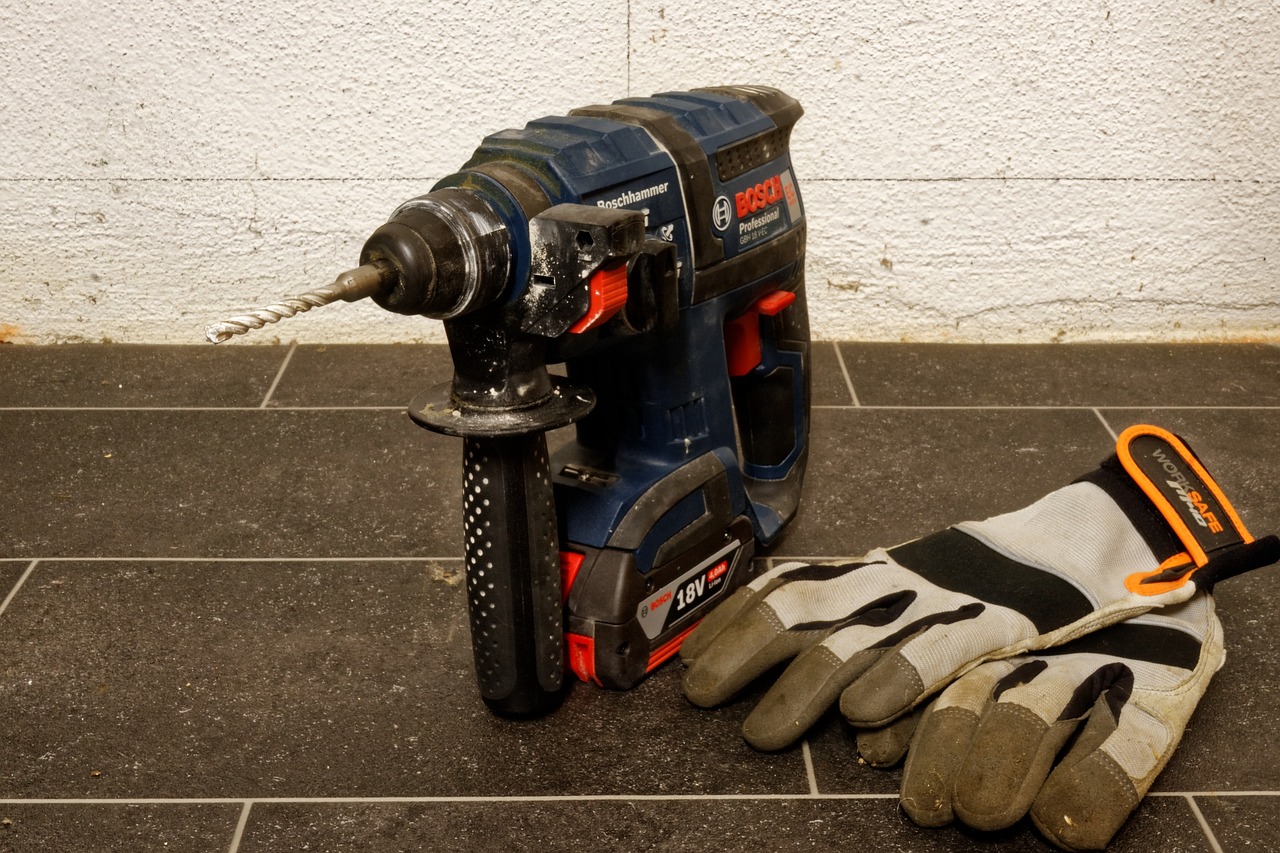
Techniques for Accurate Fabric Cutting
When it comes to quilting, the difference between a beautifully crafted piece and a frustrating mess often boils down to one crucial factor: accurate fabric cutting. Mastering this skill is not just about having the right tools; it also involves employing specific techniques that can dramatically enhance your cutting precision. Let's dive into some effective methods that can elevate your quilting game.
One of the most efficient techniques is stack cutting. Imagine you’re preparing for a big project and you have several layers of fabric to cut. Instead of cutting each layer individually, stack cutting allows you to cut multiple layers at once. This not only saves time but also ensures that every layer is cut identically, which is essential for matching seams and patterns. However, be cautious: ensure that your rotary cutter is sharp and that the layers are aligned properly to avoid any discrepancies.
Another fundamental aspect of accurate cutting is aligning fabric grainlines. Understanding how to identify and align the grainlines of your fabric can make a world of difference. The grainline refers to the direction of the threads in the fabric, and cutting along the grainline is crucial for maintaining the fabric's integrity and preventing distortion. Before you cut, take a moment to lay your fabric out flat and check that the grainlines are straight. This simple step can save you from headaches later when your pieces don’t fit together as planned.
Additionally, consider the importance of fabric preparation. Many quilters overlook this step, but it can significantly impact your cutting accuracy. Pre-washing your fabric can help eliminate shrinkage and reduce the chance of stretching. After washing, pressing your fabric is equally important; it smooths out any wrinkles and ensures that you’re working with a flat surface. This preparation step is akin to setting the stage before a performance—everything needs to be just right for the best results.
Lastly, always remember to take accurate measurements. It might sound basic, but measuring twice and cutting once is a mantra that every quilter should live by. Use a reliable ruler and double-check your measurements before making any cuts. Even a small error can lead to significant problems down the line. Think of it like building a house; if the foundation is shaky, the entire structure is at risk. So, take your time, be meticulous, and your quilting projects will reflect that care.
In summary, by employing techniques such as stack cutting, aligning grainlines, preparing your fabric properly, and taking accurate measurements, you can greatly improve your cutting skills. Each of these methods contributes to a smoother quilting process and results in a finished product that you can be proud of. So, grab your rotary cutter and get ready to transform your quilting experience!
Q: Why is precision cutting important in quilting?
A: Precision cutting ensures that your fabric pieces fit together perfectly, which is crucial for achieving a polished final product.
Q: How can I improve my cutting accuracy?
A: Utilize techniques like stack cutting, align your fabric grainlines, and always measure accurately before cutting.
Q: What tools do I need for precision cutting?
A: Essential tools include a sharp rotary cutter, a cutting mat, and quilting rulers.
Q: Should I pre-wash my fabric?
A: Yes, pre-washing helps prevent shrinkage and distortion, leading to more accurate cuts.

Stack Cutting for Efficiency
When it comes to quilting, time is often of the essence. That's where stack cutting comes into play. This technique allows you to cut multiple layers of fabric at once, which not only saves time but also ensures that your pieces are uniform in size. Imagine trying to cut several pieces of fabric individually; it can be tedious and lead to inconsistencies. Stack cutting is like having a time-saving magic trick up your sleeve!
To effectively stack cut, you should first ensure that your fabric is laid out flat and free of wrinkles. If your fabric is crinkled or bunched up, it can lead to uneven cuts, which defeats the purpose of this efficient method. Once your fabric is smooth, you can layer it up to six or eight pieces deep, depending on the thickness of the fabric. However, always remember to check your rotary cutter's capabilities and the type of fabric you are using.
Here’s a quick overview of the steps to follow for successful stack cutting:
- Preparation: Make sure your fabric is pre-washed and pressed. This minimizes any stretching or distortion.
- Layering: Stack your fabric layers neatly, ensuring they are aligned correctly. Use a cutting mat with a grid to help keep everything in line.
- Cutting: Use your rotary cutter to make clean, straight cuts through all layers. Apply even pressure and avoid rushing.
- Checking: After cutting, double-check the pieces to ensure they are all uniform. If you notice any discrepancies, you might need to trim individual pieces.
Stack cutting is particularly beneficial for larger projects where you need multiple identical pieces, such as quilt squares or strips. It significantly reduces the time spent on cutting, allowing you to focus more on the creative aspects of quilting. However, it's essential to remain cautious; cutting too many layers can lead to inaccuracies if your fabric shifts during the process.
So, next time you're gearing up for a quilting project, consider stack cutting as your go-to technique. It's like having a secret weapon that not only boosts your efficiency but also enhances the overall quality of your quilting. By mastering this technique, you can spend less time cutting and more time creating beautiful quilts that showcase your unique style!
Q: Can I stack cut all types of fabric?
A: While you can stack cut many types of fabric, it's best to avoid very thick or heavy fabrics as they may not cut evenly. Lighter cottons and blends work best.
Q: How many layers can I stack cut at once?
A: Generally, you can stack about 6 to 8 layers of lightweight fabric. However, always check your rotary cutter’s specifications and the thickness of your fabric.
Q: What should I do if my fabric shifts while cutting?
A: If you notice any shifting, stop cutting immediately and realign your fabric. You can use weights or pins to hold the fabric in place while you cut.
Q: Is stack cutting suitable for beginners?
A: Yes! Stack cutting can be a great time-saver for beginners, but practice is essential. Start with a few layers and gradually increase as you become more comfortable.

Aligning Fabric Grainlines
When it comes to quilting, one of the most fundamental yet often overlooked aspects is . Understanding the grain of your fabric is like knowing the rules of a game before you play; it sets the stage for success. The grainline refers to the direction of the threads in the fabric, and it can significantly impact the way your quilt pieces fit together. If you cut your fabric against the grain, you might end up with pieces that stretch or warp, leading to frustrating inaccuracies in your final project.
To properly align your fabric grainlines, start by identifying the lengthwise grain, which runs parallel to the selvage edges of the fabric. This is the strongest part of the fabric and should be your reference point when cutting. The crosswise grain runs perpendicular to the lengthwise grain and is more flexible but can also be used for certain designs. Finally, there's the bias, which is at a 45-degree angle to the grainlines and is often used for curves and angles in quilting but can stretch easily if not handled properly.
To ensure your fabric is aligned correctly, follow these simple steps:
- Pre-wash and press your fabric: This will remove any sizing or shrinkage and help you see the true grainline.
- Lay your fabric flat: Make sure there are no wrinkles or folds that could distort the grain.
- Use a ruler or straight edge: Measure from the selvage to find the true lengthwise grain and cut accordingly.
By paying careful attention to the grainlines, you not only enhance your cutting precision but also ensure that your quilt pieces fit together beautifully. Remember, a well-aligned grainline is the foundation of a polished quilt, making your hard work truly shine.
Q: Why is aligning grainlines important in quilting?
A: Aligning grainlines is crucial because it affects the way the fabric behaves when sewn. Properly aligned grainlines ensure that your pieces fit together accurately and maintain their shape.
Q: How can I tell if my fabric is aligned correctly?
A: You can check the alignment by looking for the selvage edges of the fabric. The lengthwise grain should run parallel to these edges. You can also use a ruler to measure and ensure accuracy.
Q: What happens if I cut against the grain?
A: Cutting against the grain can lead to stretching and distortion of your fabric pieces, resulting in a quilt that doesn't hold its shape or fit together properly.
Q: Can I use bias cuts in my quilting?
A: Yes, bias cuts can be used effectively for curves and angles, but be cautious as they are more prone to stretching. Make sure to handle them gently and pin them well during sewing.
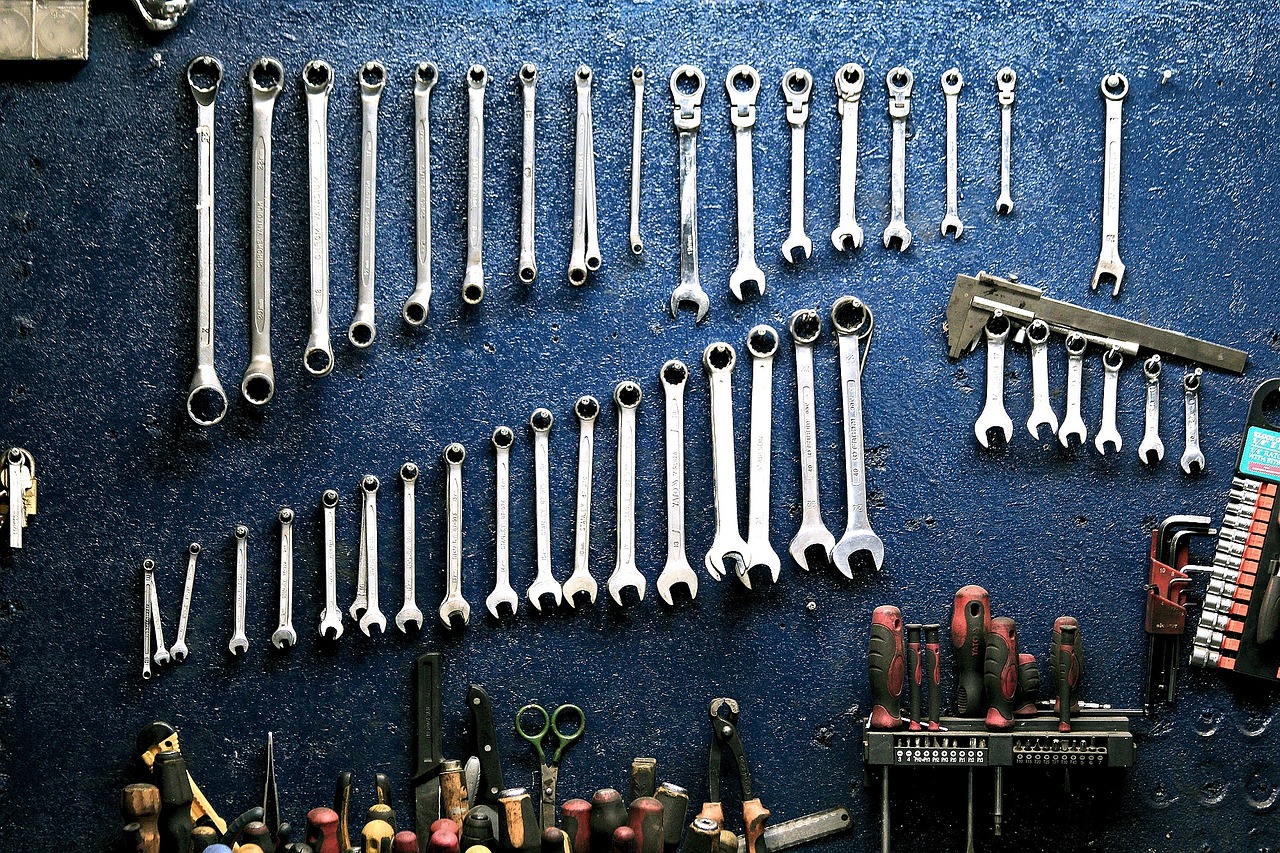
Common Mistakes to Avoid
When it comes to precision cutting in quilting, even the smallest oversight can lead to frustrating outcomes. One of the most significant mistakes quilters make is overlooking fabric preparation. It might seem like a minor step, but taking the time to pre-wash and press your fabric can make a world of difference. Pre-washing helps to remove any sizing or chemicals that might cause your fabric to shrink or distort during the cutting process. Additionally, pressing your fabric ensures that it lies flat, making it easier to achieve accurate cuts. Remember, a well-prepared fabric is your first step towards precision!
Another common pitfall is inaccurate measurements. It’s all too easy to rush through this part, but doing so can lead to cutting errors that can ruin your project. Always take your time to measure twice and cut once. This old adage holds true, especially in quilting. Use a reliable ruler and make sure it’s aligned correctly with your fabric. If you’re working with complex patterns, consider creating a cutting guide or a template to help you stay on track. A simple table outlining your measurements can be a handy reference:
| Fabric Piece | Measurement |
|---|---|
| Square A | 5" x 5" |
| Rectangle B | 3" x 6" |
| Triangle C | 4" base x 5" height |
It’s also essential to be mindful of your cutting technique. Many quilters make the mistake of using dull blades. A dull rotary cutter can lead to jagged edges and uneven cuts, which can ruin the overall look of your quilt. Always ensure your blades are sharp, and replace them regularly. Additionally, don’t rush your cuts; take your time to ensure each slice is smooth and precise.
Lastly, one mistake that often goes unnoticed is not considering the fabric's grainline. Cutting against the grain can lead to distortion, which affects how pieces fit together. Before you cut, take a moment to identify the grainline of your fabric and ensure it is aligned correctly with your ruler. This small step can save you from a lot of headaches down the line.
By avoiding these common mistakes, you can enhance your precision cutting skills and enjoy a more successful quilting experience. Remember, quilting is not just about the finished product; it’s about enjoying the process and learning along the way!
Q: How can I ensure my rotary cutter stays sharp?
A: Regularly replace the blades and store your cutter properly when not in use. Avoid cutting through multiple layers of thick fabric to prolong blade life.
Q: Is it necessary to pre-wash my fabric?
A: Yes, pre-washing helps to remove any chemicals and prevents shrinking after your quilt is complete, ensuring your pieces fit together accurately.
Q: What should I do if I make a cutting mistake?
A: Don’t panic! Assess the mistake and see if you can adjust your measurements or cut a new piece. Often, a little creativity can salvage a project.
Q: How do I know if my measurements are accurate?
A: Use a reliable ruler, double-check your measurements, and consider using a cutting guide to help keep you on track.

Overlooking Fabric Preparation
When it comes to quilting, the phrase "measure twice, cut once" is often echoed, and rightly so! However, one crucial step that can be easily overlooked is fabric preparation. You might be wondering, why is this step so important? Well, imagine trying to build a house on a shaky foundation; it just won't hold up! Similarly, if your fabric isn't properly prepared, your quilting project can suffer from stretching, distortion, and ultimately, an unsatisfactory final result.
Before diving into the excitement of cutting your fabric, it's essential to consider a few key steps in preparation:
- Pre-Washing: Always pre-wash your fabric to remove any sizing or chemicals that may cause the fabric to shrink after you've cut it. This can save you from unexpected surprises later on!
- Pressing: After washing, pressing your fabric is vital. It not only removes wrinkles but also helps to flatten the fabric, making it easier to cut accurately. A flat surface is your best friend in the world of quilting.
- Cutting with the Grain: Understanding the grain of the fabric is crucial. Cutting against the grain can lead to distortion, so always make sure your fabric is aligned correctly before making any cuts.
By taking the time to prepare your fabric properly, you’re setting yourself up for success. Think of it as a warm-up before a big game; it gets you ready and prevents injuries along the way! Additionally, if you're working with multiple layers of fabric for a larger project, ensuring that each layer is equally prepared will lead to a seamless finish.
In conclusion, overlooking fabric preparation can seem like a minor detail, but it can have a significant impact on your quilting experience. By investing a little time in these preparatory steps, you not only enhance your cutting precision but also ensure that your final product is something you can be proud of. Remember, a well-prepared fabric is the first step towards quilting success!
- Why is pre-washing fabric necessary? Pre-washing removes chemicals and prevents future shrinkage.
- What tools can help with fabric preparation? An iron for pressing and a fabric ruler for measuring are essential.
- How do I know if my fabric is cut on the grain? Look for the selvage edges; they indicate the fabric grain.
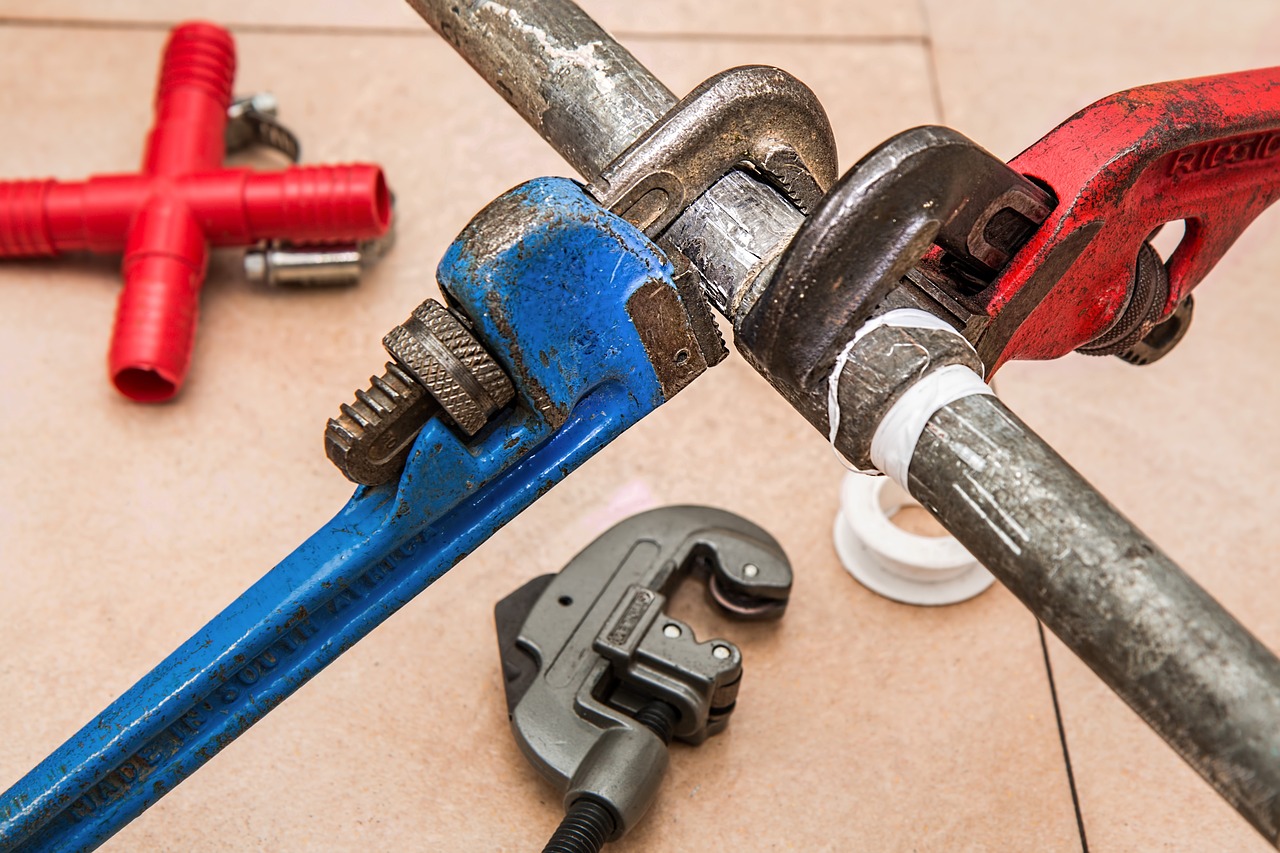
Inaccurate Measurements
When it comes to quilting, accuracy is everything. One of the most common pitfalls that quilters face is taking . Imagine spending hours piecing together beautiful fabrics only to find out that your quilt blocks don’t fit together correctly. It can be frustrating, to say the least! The key to avoiding this pitfall lies in developing a disciplined approach to measuring your fabric before you cut.
First and foremost, always use a reliable measuring tool. A clear, straight ruler is essential for precise measurements. If you’re using a tape measure, ensure it’s not stretched or warped. It’s also a good idea to double-check your measurements. You might think you’ve got it right, but a second look can catch errors before they become costly mistakes. For example, if you're cutting a 5-inch square, measure twice to confirm that you’re cutting accurately. Remember the old saying, “Measure twice, cut once.” It’s a mantra that has saved many quilters from unnecessary heartache!
Another aspect to consider is the way you’re measuring your fabric. When measuring, always start from the same point on the fabric. If you’re measuring from the edge, make sure you’re consistent each time. Additionally, be aware of the fabric’s nap or directional print if applicable, as this can affect how you measure and cut. Some fabrics may look the same on both sides, but others can have a distinct direction that needs to be taken into account.
To help illustrate the importance of accurate measurements, let’s take a look at a simple table that outlines common measurement errors and their potential impacts:
| Measurement Error | Impact |
|---|---|
| Cutting 1/4 inch too small | Blocks won't fit together, leading to gaps. |
| Cutting 1/4 inch too large | Blocks overlap, causing puckering and uneven seams. |
| Not accounting for seam allowances | Finished quilt may be smaller than intended. |
| Ignoring fabric stretch | Distorted shapes, especially with knits or bias cuts. |
By being aware of these common measurement errors, you can take proactive steps to ensure your cuts are as precise as possible. Remember, quilting is a blend of art and science, and precision cutting is the foundation that supports your creative vision. So, take your time, measure carefully, and watch your quilting projects come together beautifully!
- What tools do I need for accurate measurements?
A clear ruler, a rotary cutter, and a self-healing cutting mat are essential for precise cutting. - How often should I check my measurements?
Always measure twice before cutting to avoid mistakes. - What should I do if I make a cutting mistake?
Don’t panic! Assess the situation and see if you can salvage the piece or adjust your project accordingly.
Frequently Asked Questions
- What is precision cutting in quilting?
Precision cutting in quilting refers to the practice of making accurate and clean cuts in fabric to ensure that all pieces fit together perfectly. This technique is essential for achieving a polished final product and enhances the overall quality of your quilting projects.
- What tools do I need for precision cutting?
To achieve precision in cutting, you will need a few essential tools, including a rotary cutter, cutting mat, and quilting rulers. These tools help you make accurate measurements and cuts, improving the quality of your quilting work.
- How do I maintain my rotary cutter for better performance?
Maintaining your rotary cutter is simple but crucial. Regularly change the blades to ensure sharpness and clean the cutter after each use to prevent fabric residue buildup. This maintenance will enhance your cutting precision and prolong the life of your tool.
- What is stack cutting, and how does it help?
Stack cutting is a technique where you cut multiple layers of fabric at once. This method saves time and maintains precision, making it especially useful for larger projects. By stacking fabric layers, you can achieve uniform cuts quickly and efficiently.
- Why is fabric grainline important in cutting?
Understanding and aligning the fabric grainline is vital for making precise cuts. The grainline affects how the fabric behaves and drapes, so ensuring that your cuts are aligned with the grain will result in better-fitting pieces and a more professional-looking quilt.
- What common mistakes should I avoid when cutting fabric?
Some common mistakes to avoid include overlooking fabric preparation, such as pre-washing and pressing, and taking inaccurate measurements. Always double-check your measurements and ensure your fabric is properly prepared to achieve the best cutting results.



















